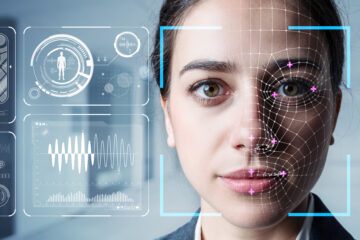Measurement in Digital Out of Home
“You can’t manage what you can’t measure.”
Peter Drucker
This often-quoted maxim from the management thinker Peter Drucker has never been more pertinent to the Digital Out Of Home (DOOH) ecosystem as it is now. The measurement of the impressions, the opportunities for an audience to see media played out on a digital out of home screen, has always been a challenge to the DOOH industry and the world events of the last two years have only highlighted the issue.
Planners need accurate and reliable audience exposure figures to be able to create cost effective campaigns for their clients. These clients want proof from their agencies that DOOH deserves the proportion of their advertising budget that it duly deserves. Media owners need timely and accurate data for their inventory to allow them to accurately price their digital signage and prove return on advertising investment to the buyers of their product. Finally, the evolving programmatic buying ecosystem relies on accurate predictive figures for DOOH sites to function correctly which can only be derived with accurate historical measurement of impressions.
There is a long-established and respected solution for DOOH audience measurement, which covers the majority of digital inventory, and provides the main currency for purchasing DOOH advertising. However, there is significant, and increasing digital inventory which is being operated independently from this service. For these screens reliable and timely audience data is not available, presenting a significant problem to these media owners wishing to exploit these advertising opportunities.

One option that is available is the use of third-party data. At first sight, the application of the prolific third-party data that society as whole generates, should be more than capable of providing timely and accurate impressions figures for the DOOH industry. In practice this is not the case. Apple, Google, mobile telecommunications companies, mobile application API providers such as the weather companies etc., all have data that is needed for the generation of what is required. The problem is either the data is not available, too expensive or cannot be provided in a timely enough manner. The more recent privacy legislation enacted in Europe, Asia and other parts of the world only serves to further thwart the use of such data.
Even third-party data obtained at a more local scale has its problems. Till transactions, gate transactions, car park usage etc., all have problems when they are used to determine a figure for nearby DOOH signage impressions. The main issue is that they only have a tentative correlation to the figures desired. Trying to provide comparable figures for different geographical sites using disparate data sources only further exacerbates the problem. Rather than comparing apples with pears such approaches usually end up comparing apples with spanners.
This is not to say that use of third-party data in DOOH does not have its place. It’s ideal for providing the audience segmentation data that can be overlayed onto the required impressions figures to optimise programmatic planning but it is a poor substitute for accurate and timely impression figures themselves.
Another alternative, the installation and use of remote sensing equipment would seem the only viable alternative to the other two but again has it its shortfalls. Such traditional remote sensing devices include camera equipment, beam breakers and lidar, a remote sensing method that uses light in the form of a pulsed laser to measure ranges. The applicability of data obtained with these sorts of devices for impressions measurement is up for discussion. Many places such as the EU and certain states in the USA forbid the use of any camera equipment in digital signage. The amount of data transmission or on device processing required to turn camera images into meaningful data can also be a problem. Beam breakers have inherent problems when used with large crowds as does lidar and neither of them are suited to installation in all environments.
A unifying problem with the alternative approaches discussed so far is the financial burden. Both can be prohibitively expensive to implement and run at scale. This presents a significant barrier to entry to the smaller or start-up media owner wishing to install DOOH screens.
So, what is needed? It is suggested an attempt to design a solution from the ground up would start off with a functional specification as follows:
- Provision of accurate hourly impressions figures
- Compliant with all current, and future, privacy legislation
- As near to real time as possible
- Inexpensive and scalable
- Applicable to all formats of digital signage
- Small and easy to install
- Self-monitoring
After almost two years of fruitless searching for a usable approach it was with this list of requirements in mind that we at Crowd-Sense decided we would have to create our own. A further two years later Crowd-Sense has successfully developed the Crowd-Sense collector service meeting all these goals. There is one type of sensing device that was not discussed previously, a device that can detect and measure the presence of digital devices. Almost all of us carry around with us a digital device at all times, namely our mobile phones. Our phones regularly, at least once a minute independent of the device manufacturer, send out a signal looking for WiFi access points to connect to. By detecting the mobile phone signals proximal to digital signage, a highly accurate measurement of impressions can be obtained. In addition, the strength of the signal can be used to estimate the distance of the device from the signage. Using an algorithmic approach to filter out signals that are not originating from mobile devices further enhances the accuracy of the data obtained. Also because of the completely anonymous nature of the signals collected and the secure encrypted transfer of the data from a Crowd-Sense collector, privacy is at the forefront of service being completely GDPR compliant.
The Crowd-Sense collector service is now being used at hundreds of sites within the UK and the figure is growing. Now our customers have the impressions data they need what are they doing with it? A rolling four-week average of impressions figures by site, by day, by hour provides accurate figures to use for pricing. Reporting to customers on the actual number of impressions reached for their campaigns is simple and can be automated. An unforeseen benefit is the active monitoring of installed Crowd-Sense collectors which has already been used to detect WiFi and power outages at digital signage sites. Not only do Crowd-Sense collect the impressions data for customer sites but we also record the hourly weather details. This data is now being used to build predictive models which can be used to provide programmatic buying functions for the DOOH industry that has been talked about for so long but not delivered to its true potential.
At Crowd-Sense with regard to digital signage we believe you really can’t get real time audience impressions data effectively from anywhere else.



1 Comment
Audience prediction in DOOH - Crowd-Sense · February 20, 2023 at 5:10 pm
[…] Measurement in Digital Out of HomeOctober 1, 2022 […]
Comments are closed.